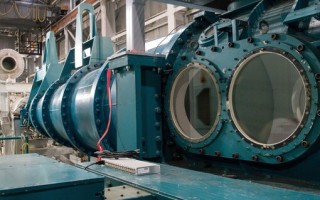Hypersonics R&D institute to be situated at Texas A&M University
NewsOctober 27, 2020

COLLEGE STATION, Texas. Texas A&M University's Engineering Experiment Station (TEES) has been granted a $20 million per year contract to found and run what it will call the University Consortium for Applied Hypersonics (UCAH).
The award -- announced by the U.S. Department of Defense (DoD) -- consists of a base year and four additional option years of $20 million, with a total value of as much as $100 million.
In a statement, the DoD said that the UCAH, which is expected to begin operations by mid-November 2020, will work in concert with the military branches, defense research agencies, and other government organizations, such as NASA and the U.S. Department of Energy. The consortium also collaborates with small and large companies and other academic research centers to pursue promising basic and applied research and then transition that research into future systems.
The DoD said that one of the primary aspects of the consortium is its strong focus on applied hypersonics research and modeling and testing, which will facilitate the transfer of academic research into developing systems; the consortium will also work with the department to reduce system development timelines while upholding quality-control standards.
The UCAH will be managed by Dr. Rodney Bowersox of TEES; he is considered one of the nation's foremost hypersonic researchers, said the DoD's Dr. Gillian Bussey, Director, Joint Hypersonics Transition Office, Office of the Undersecretary of Defense for Research and Engineering. While UCAH will be leading the research, the efforts will be overseen by an interim governing board of national experts from Texas A&M, Massachusetts Institute of Technology, University of Minnesota, University of Illinois at Urbana-Champaign, University of Arizona, University of Tennessee Space Institute, Morgan State University, California Institute of Technology, Purdue University, University of California-Los Angeles, and Georgia Institute of Technology.






